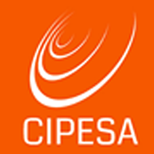Lyndall Shope-Mafole, Director General of South Africa’s Department of Communications, spoke to CIPESA on August 29 2006 about what her government is doing to increase affordability of telecom services, the East African Submarine System (EASSy) and the future of the SAT 3 cable. Excerpts:
Q. What is the South African (SA) government doing to enhance affordability of telecommunications services?
A. One of the objectives of our government is to make SA competitive and broaden participation of the poorest citizens in our economy. To increase competitiveness in the economy the cost of communication has to be much lower, so we want reliable communication that is affordable. From experience, the cost of communication is cheaper where there is infrastructure and where governments have taken a specific role to see that infrastructure is built and is affordable. Governments can do this using public funds, or tax exemptions.
For SA the challenge is that we are big geographically; we are not small like Singapore where you can put up fibre overnight and cover the whole country. Yet the state has to make infrastructure available. So we have licenced a Second National Operator (SNO), but even then unless you take a deliberate policy to ensure that the network goes beyond big towns, you will not cover all the country.
Q. How does EASSy fit into this picture, and how will you reconcile with private sector players that accuse governments and the New Partnership for African Development (NEPAD) of sidelining them in the EASSy project?
A. It is difficult to argue with people who have invested their own money but our role as governments is to set the policy framework under which the cable will be built. The telecom companies are not terribly thrilled with governments because the governments are saying this cable is not only for profits but has developmental objectives too. Besides, governments will assist to get funding for EASSy under the NEPAD framework. Even the smallest African telecom company can have equity to put in the network. That will promote competition and affordability of EASSy bandwidth.
Q. What benefits will the SNO bring to SA?
A. More competition often leads to lower prices. But the more important thing is that South Africans will have an alternative to Telkom and the mobile operators. It is in the exercise of choices that companies are then forced to attract people, reduce tariffs, and provide a variety of services.
We have already promulgated regulations to enable number portability. What this means is that a customer keeps their number regardless of the mobile operator they are subscribed to. If one is fed up with Cell C, or Vodacom or MTN, they cross to another provider but keep their number. The cost of communication can only go down if you have choices. And if it is easy to make for subscribers to switch, operators will strive to get more customers and to keep those they have. [The Independent Communications Authority of South Africa (ICASA) in early September decided that Mobile Number Portability (MNP) would take effect on November 10 2006 rather than on September 18 as had earlier been announced. Telecom operators had asked to be given up to October 30 or November 30 to ready themselves for MNP – CIPESA].
Q. Telecom companies also need to share infrastructure to lower their capital inputs.
A. There could be government regulations that there should be sharing, because it is rare that those who build their infrastructure allow others to use it. But in some areas in SA there are trials by companies to share infrastructure under the Digital Video Broadcasting venture though which television channels are received via cellphone. For this to be possible you have to build a network afresh. Companies are saying if government says a parastatal will build the network and then they are able to use it, they will be happy. Also, operators also increasingly realising that you don’t have to build five highways to Durban.
Q. What will happen after the monopoly which companies like Telkom SA have in SAT 3 ends next year?
A. Already some of the companies in SAT 3 have indicated that the NEPAD principles that we have adopted for EASSy should apply to SAT 3 at the end of the contract period. But they will have to consult on this. I am sure EASSy [bandwidth] will be a lot cheaper and they will want to benefit from that. The ownership protocol we signed [in Kigali on August 29) puts all those things in context and provides for cables on the continent being inter-linked. Government could also spell out what companies that were party to SAT 3 before we signed the protocol can do, and what those that wish to access it after the signing can do. I don’t envisage major problems in that regard. In SA we shall make sure our international infrastructure is harmonised with the new cable (EASSy).
